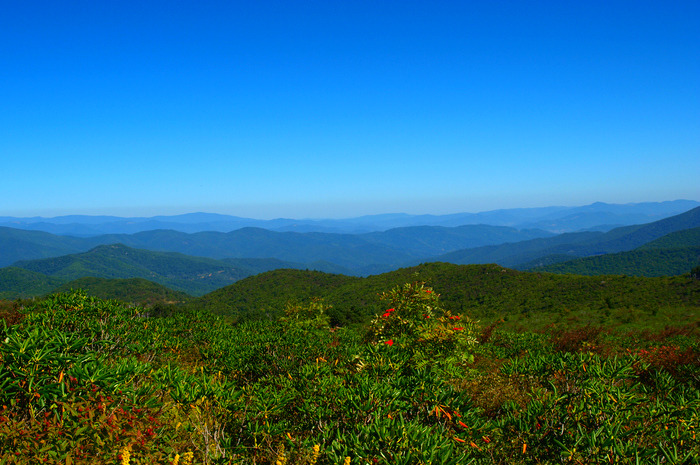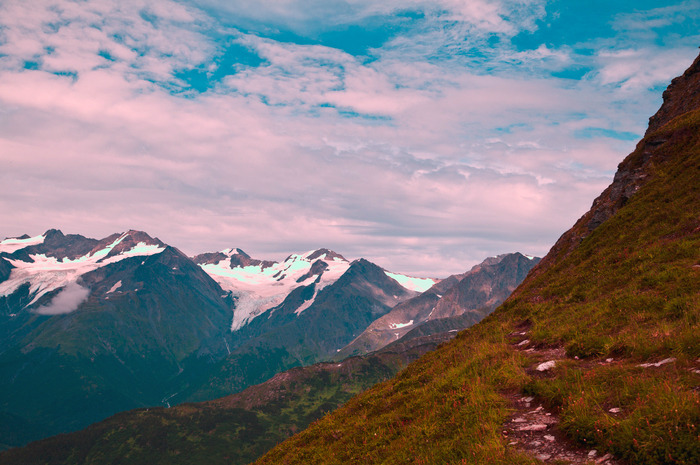Most Scenic Day Hikes To Do This Summer
Most Scenic Day Hikes to Do This Summer
Hiking is a popular pastime in the U.S. With thousands of spectacular trails in every state, picking where to spend a day trekking can be a challenging task. Summer is a time to reconnect with nature as you look to escape high temperatures and crowded beaches, to find an adventurous retreat spot for the weekend. After all, people who spend time in parks cope better with stress, feel happier and have more self-esteem, as studies have shown.The routes on the following list range from length and difficulty, to geology and surrounding scenery. Some people prefer rugged unpaved terrain while others opt for a marked route to avoid surprises.
North Country Scenic Trail—Mesick, Michigan
The North Country National Scenic Trail, a hidden gem in the hiking world, is for people who can handle moderately difficult treks. Twice the size of the Appalachian Trail, it stretches from New York to North Dakota and stakes its claim as the longest continuous hiking trail in the U.S. In Michigan near Mesick, the NCST traces some of the wildest, most beautiful parks and forest the Great North has to offer. Start at the Marilla Trailhead and hike 20 brisk miles to High Bridge for scenery, solitude and a great stretch of tree-lined climbs through the Huron-Manistee National Forests. Several trailheads in between allow for shorter options.
Art Loeb Trail—Pisgah National Forest, North Carolina
Shining Rock Wilderness off the Blue Ridge Parkway, another moderately difficult trail, is a popular Asheville escape for good reason—6,000-plus-foot peaks offer amazing views of blooming rhododendron and laurels for miles. Scramble up the steep rise to the 6,214-foot Black Balsam Knob for a quick survey of the scene, and then continue up the rugged trail to the quartzite peak of Shining Rock for a 10-mile loop. Wild blueberries are everywhere in August.
Delicate Arch—Arches National Park, Utah
This can be an easy 1.5-mile hike, as long as you avoid hot summer afternoons. Go and see what may be the world's most famous natural arch, the 65-foot Delicate Arch. Hikers start on a wide, flat trail that leads to the base of a steep sandstone slope. Then, they hike up the slope, known as "slickrock," following a series of cairns to the less-famous Frame Arch, before arriving at Delicate Arch. The hike also offers sweeping views of Arches National Park, with its characteristic sandstone formations and, in the distance, the snowy La Sal Mountains.
Marmot Pass—Olympic National Forest, Washington
The 5.3-mile moderately difficult hike, to 6,000-foot Marmot Pass, wends through roughly two miles of towering, moss-covered cedars. You start in a mysterious forest and hike for 2.5 miles through enormous cedars and hemlocks, old-growth standing silently while the Big Quilcene River babbles along beside you, according to the Washington Trail Association. You'll climb to Camp Mystery, at about 5,300 feet in elevation, then you'll hike through a meadow and up another rise to a second meadow that gives you the view of your goal – the pass. The summit offers views of Mount Hood, Puget Sound and the Cascades in the distance, as well as the Olympic summits such as Mystery and Deception.
Glen Alpine Trail—South Lake Tahoe, California
This is one of the best day hikes in Tahoe. The Glen Alpine Trail spans 12 miles through western wilderness. The path winds past waterfalls and cashes in on the best part of Tahoe—views of the incredible lake – the largest alpine lake in North America, admired for many incredible features, the surrounding mountain panoramas, and its stunningly crystal clear waters, which are said to be 99.9 percent pure.
Camel's Hump—Green Mountains, Vermont
The view from Camel's Hump, the state's third-highest mountain, is unsullied by cell towers, ski lifts and other standard manmade distractions, which is a surprisingly rare treat for a Vermont hike. There are a number of trailheads around the mountain, and all offer a chance to rock-hop your way to the 4,083-foot open summit. One of the most amazing paths is the moderately strenuous 6.8-mile roundtrip route on the Monroe Trail. Expect steep climbs and exceptional views of endangered alpine vegetation.
Mt. Tammany—Worthington State Forest, New Jersey
This New Jersey mountain overlooks the Delaware Water Gap, providing spectacular views and a variety of trail options, all within eagle-watching territory. The main loop makes for a great day hike at only 3.5 miles long, but what it lacks in distance, it makes up for in pitch—1,250 feet of climbing. Hikers should take the Red Dot trail for the accent and the Blue-blazed trail coming back down, as the latter is less steep.
Conundrum Hot Springs—Aspen, Colorado
Getting into a hot tub for your sore muscles after a long day hike is the perfect end of an adventure. Head to Conundrum Hot Springs near Aspen, Colorado, where an 8.5-mile hike through the Maroon Bells–Snowmass Wilderness area leads to 102-degree natural springs. The best time to go is between July and October. Masochists can spend a short while enjoying views of 14,265-foot Castle Peak before heading back downhill, but you'll likely want to spend the night at one of 16 primitive campsites nearby.
Rim Trail, Maricopa Point to Hermits Rest – Grand Canyon, Arizona
The section of the Rim Trail between Monument Creek Vista and Hermits Rest is known as the Hermit Road Greenway Trail, according to NPS. The popular scenic route along the west end of Grand Canyon Village on the South Rim follows the rim for 7 miles out to Hermits Rest. The trail is accessible by free park shuttle bus, foot, or bicycle. Get to Hermits Rest for astonishing sights of the Grand Canyon and more. Plan to hike late in the day to catch the gorgeous sunset. Maricopa Point is one of 8 view points along Hermit Road.
Root Glacier Trail – Wrangell-St. Elias National Park
This is an easy 4-mile day hike right in the heart of Wrangell-St. Elias National Park, the largest in the country, rising from the ocean all the way up to 18,008 feet, according to NPS. If you want a true Alaskan experience, this is where you go. You'll get close to a superb glacier. You can go on guided tours to see gorgeous blue pools, interestingly-sculpted ice surfaces, and pouring waterfalls. You'll also have the chance to spot bears cruising on the lateral moraine below you, according to Alaska.org.
Lakes Trail to the Watchtower – Sequoia and Kings Canyon, California
This is a 12-mile round-trip, moderately difficult hiking trail that goes up to 9,600 feet in elevation. It will take you about six hours to complete – or, more likely, 10 as you're probably going to stop a lot to take photos of the stunning views of alpine scenery and enchanting glacial lakes. The trail starts at Wolverton and ascends a lateral moraine to high alpine country. Make your way to the Watchtower, a highpoint rising about 2,000 feet above the Tokopah Valley floor. You also get a bird's-eye view of 1,200-foot Tokopah Falls.
Crow Pass trail to the Raven glacier – Chugach State Park, Alaska
These 21 miles out and back are considered the best hike in all of the Chugach Mountains. Crow Pass follows a portion of the original Iditarod Trail, including its highest point, according to Alaska.org. You don't have to do the entire trail, which most people complete in two days. The first 4-5 miles are enough to get a true feeling of the spectacular scenery along the route – glaciers, waterfalls, wildflowers, wildlife, mine ruins, and berries.
Beaver Brook Trail – Milford, Connecticut
This is an easy and short – just about 1.5 miles – trail. It's ideal for people looking to spend an enjoyable and relaxing afternoon in nature. Hiking thought trees and crossing bridges across the swamps in Beaver Brook, will be a refreshing experience. Beaver Brook trails are open to the public every day from dawn until dusk. Dogs are welcome, but must be leashed. Fishing is allowed.











